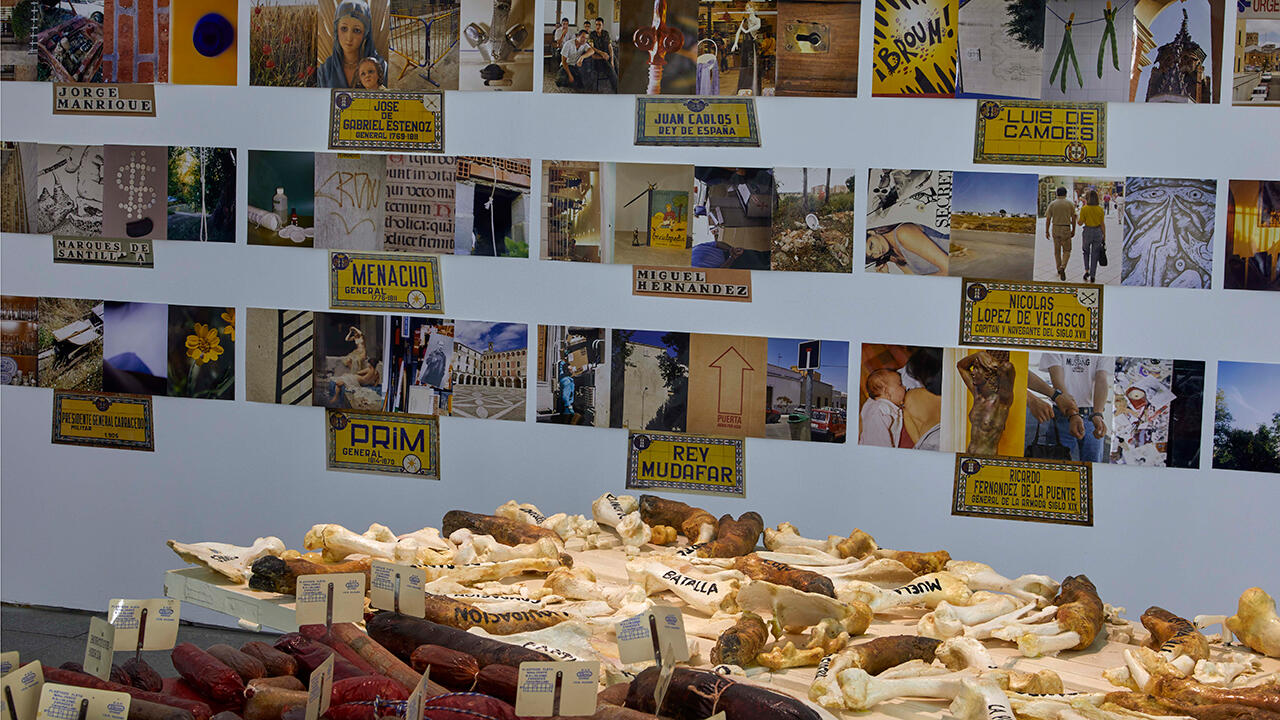Rosa Barba’s Poetry of Science, Ghosts, and Machines
At San Sebastián’s Tabakalera, hypnotic multimedia installations suggest non-human intelligence can function as a generator of meaning, not just as a tool
At San Sebastián’s Tabakalera, hypnotic multimedia installations suggest non-human intelligence can function as a generator of meaning, not just as a tool

At the entrance to Rosa Barba’s exhibition ‘Drawn by the Pulse’, a hypnotic celluloid film zigzags through a lightbox circuit on an oversized 35mm projector. While the work (Drawn by the Pulse, 2018) is silent, the sound of the projector emerges as a kind of ghost invoking the magic of archaic mechanisms. The whirr of this filmic sculpture is so loud and constant that it contaminates not only the acoustic environment of the exhibition, but also our perception of the images displayed.

In this new film, commissioned by Tabakalera, dancing stars in the cosmos merge with more abstract close-ups of materials, light quivering on the film’s surface like strange writing. The syncopated rhythm of the passing photograms is elusive; fragments of the sky, of light and a sense of a void are transformed into a noisy elegy. Drawn by the Pulse alludes to the ambiguity of scientific observation by referring to Henrietta S. Leavitt’s investigations into the properties of stars. As an astronomer at the Harvard College Observatory, Leavitt examined photographic plates in order to measure and catalogue the brightness of celestial bodies. Using the flickering of stars studied by Leavitt and copies of her photographic plates, Barba decodes a section of knowledge in order to obscure its intended rational content and create a machinist poem out of it. In the same gallery, projected at an unusual height, Above the Plate and Receiver (2016) is a black and white 16mm film that, once again, takes a scientific artefact as an alibi to explore the limits of human subjectivity. Here, however, a soundtrack of electronic music from Jan St. Werner’s Felder (2016) accompanies the work. The songs bleed into the acoustic environment of the exhibition space, getting lost and suggesting an unresolved relation between time, space, light and vibration. Fugacity is both the form and content of this piece, in which the evanescence of sound is reinforced by the elusiveness of the film’s projection. The inconvenient positioning of the projection, above bodily height, forces the audience and the apparatus of the machine to enter into unexpected interactions. The effect is to dispossess viewers of any sense of proportion, which is reshuffled again through the play of light.

This sense of loss through expansiveness is literalized by the overwhelming From Source to Poem (2016), a huge filmic sculpture displayed in the smallest gallery. Comprising images shot at the Library of Congress’s National Audiovisual Conservation Center and in the Mojave Desert, the film shows us a dry landscape and a working environment lined with projectors, cameras and other devices while a series of superimposed voices narrate the decay in clarity that comes with the layering of information. Following on from the idea that objective representation is fictional is the understanding of knowledge as open, elusive and transient. Scientific observation and the interferences of daily life are intrinsically bound together, something evidenced by the way in which gestures, noises, artefacts and images gather in this exhibition to produce an irrevocably subjective experience. In a moment in which over-information shapes that subjectivity, this exhibition leaves us with an uncomfortable and unresolved reflection on the relationship between perception and knowledge, objectivity and artifice.
Vindicating the materiality of knowledge in an age of digital transparency, ‘Drawn by the Pulse’ proposes that technological devices and non-human perception can function as generators of meaning, not just tools. Through an entanglement of noise and sound, image and light, anthropocentrism is displaced by a rich state of confusion.
Rosa Barba: Drawn by the Pulse is on view from 22 June until 14 October 2018 at Tabakalera, San Sebastián.
Main image: Rosa Barba, 2018, installation view, Tabakalera, San Sebastian. Courtesy and photograph: Tabakalera























